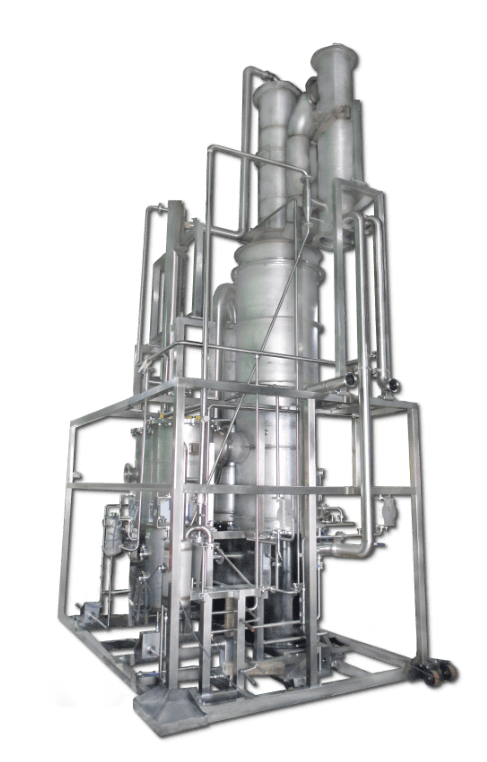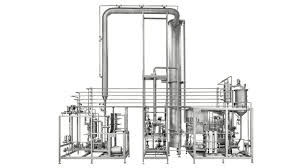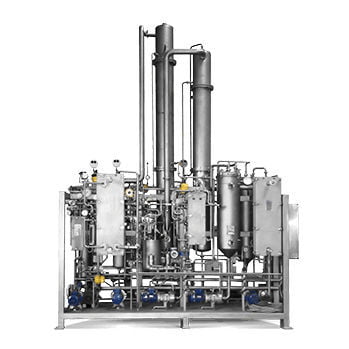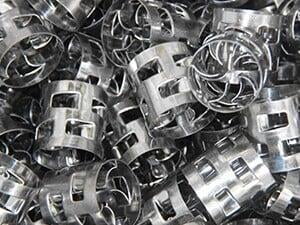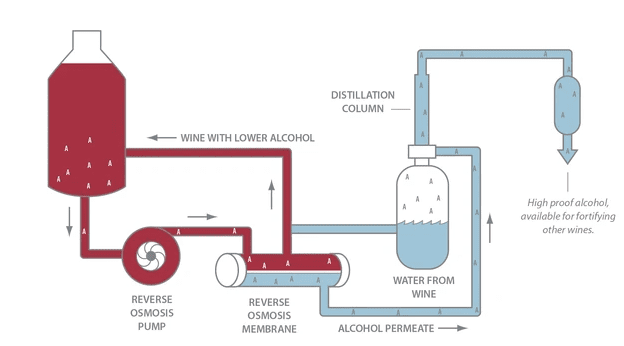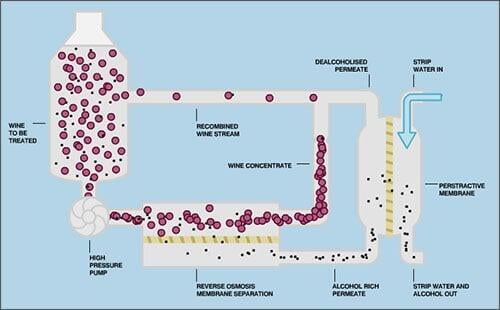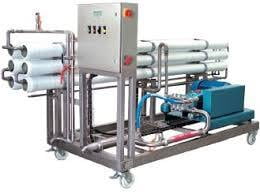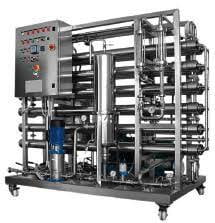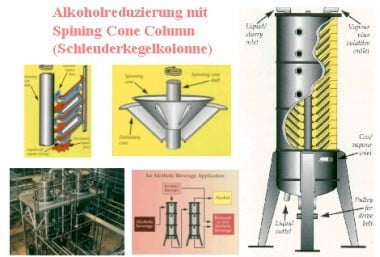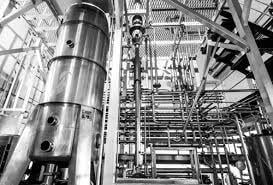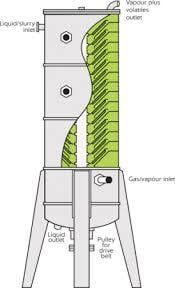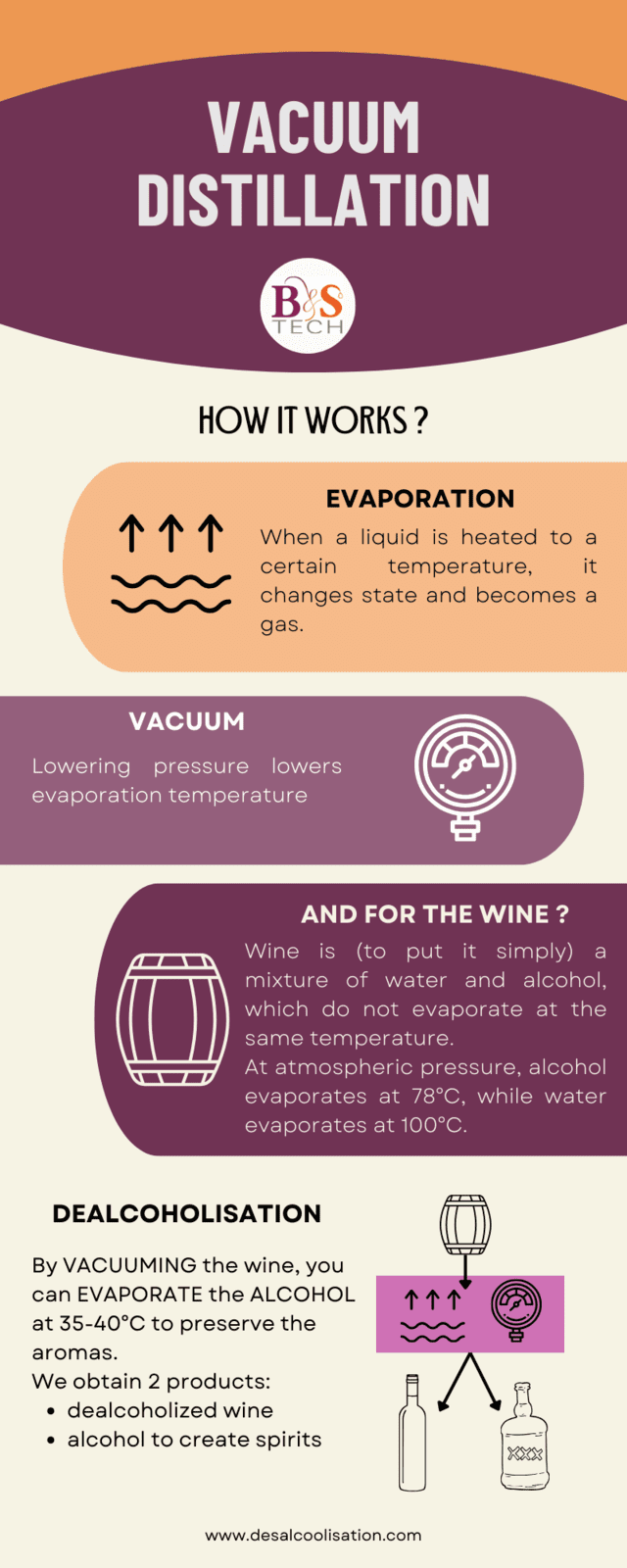Principle
This involves consist in separating the alcohol and the aromas from the product (wine, beer, spirits) by means of a distillation principle.
By evacuating the plant, the boiling point of volatile compounds - such as alcohol or aromas - is lowered, allowing the product to be heated to between 35°C and 50°C only.
A flow of steam from the bottom of the column captures the vaporized volatile compounds and a condenser then cools them down to recover them in a liquid phase. The rest of the product, which is in liquid form, falls to the bottom of the column by gravity and is then recovered, free of its aromas and alcohol.
There is then - depending on the manufacturer - an option to separate the aromas from the alcohol in order to reincorporate them into the dealcoholised product.
Watch a video presentation of the GoLo here: https://conetech.com/global/about/technologies/
The main assets
1. Product quality: with this technology, it is possible to separate alcohol with an alcohol content of up to 95% by volume, without dragging other elements from the initial product and without the addition of external elements. It is also possible to separate the aromas and then put them back into the dealcoholised product.
2. Economical & Ecological: There is no use of water, no oxygen intake and the energy efficiency is very high.
3. Low Maintenance: Maintenance is very low because there are no moving parts and very few consumable parts.
4. Low Losses : Losses are minimal, especially due to alcohol rectification and aroma recovery.
5. Optimized process time: The separation of essences and alcohol is done in a single step and therefore does not affect the process time.
6. Dealcoholisation performance: It is possible to dealcoholise the product up to 0.02% vol. In case of an alcohol adjustment of 2% vol. only 20% of the wine will be treated, which will reduce the process time but also protect the 80% left.
Features/options
Depending on the manufacturers, and the designs, there are some particularities:
Aroma recovery: Some manufacturers do not offer this option.
Alcohol rectification: some manufacturers do not offer this, so the alcohol level is closer to 60% by volume, which increases the loss of product.
Drive: Some manufacturers use the product itself as a drive vehicle in the column, while others use external steam, which introduces an external agent in contact with the product, which is less recommended.
For more details on this technology and the different suppliers, send us an e-mail to contact@desalcoolisation.com
Principle
This consists of separating alcohol from other residues through membranes using the reverse osmosis technique.
The process consists in eliminating solvents through a specific membrane under the action of a pressure higher than the osmotic pressure of the wine. For wine, a mixture of water and alcohol with more or less other molecules such as organic acids or potassium (liquid called permeate) is extracted.
To obtain a reduction in the level of alcohol, it is necessary to remove the alcohol from this permeate and reintroduce the water obtained in this way into the treated wine.
There are then 2 processes, to which Reverse Osmosis is often coupled : Membrane Contactor or distillation.
Source : ITV France
The main assets
1. Investment cost: this technology is the cheapest, especially when it comes to reducing the alcohol content in the product by 1% to 4% vol.
2. Adjustment in wine: This is the most used to adjust 1% to 2% vol. of alcohol in wine, as it is very efficient in flow and volume.
3. Implantation & mobility: It is the least voluminous technology (mainly in height), which allows it to be mobile.
Features/options
Membrane Contactor (MEMSTAR® Process): With this technique, the alcohol in the permeate is removed by osmosis through a micro-filtration membrane. The alcohol is recovered in the water (7% to 9%) and is then a reject to be eliminated.
The treatment is carried out continuously and cannot lead to a significant drop in the alcohol content (30% of the treated volume will be lost for a drop of -2% vol. and 100% will be lost for a drop of -4% vol.).
For more details on this technology and the different suppliers, send us an e-mail to contact@desalcoolisation.com
Source : ITV France
Principle
Then, the principle is the same as cold distillation with a heating of the product around 50°C.
The treatment is performed in two passes: a first to recover the aromas (about 3% of the volume) and a second to dealcoholise the wine. The aromatic fraction (alcoholic around 60%) can be reincorporated into the wine in this way, provided that the aim is not to reach 0.0%.
The main assets
1. Dealcoholization performance: It is possible to dealcoholize the product up to 0.02% vol. In the case of a 2% adjustment, only 20% of the wine will be treated, which will reduce the process time but will also protect the 80% left.
2. Quality of the alcohol: The alcohol removed is about 60% vol., it is a quality wine distillate.
3. Flexibility: It is possible to process wine, beer and spirits but also heavier and denser products such as fruit juices.
Features/options
1. The separation of essences and alcohol is done in 2 steps, which significantly increases the process time.
2. The non-rectification of alcohol causes losses in the order of 30%.
3. The technology is expensive to purchase and also expensive to maintain.
For more details on this technology and the different suppliers, send us an e-mail to contact@desalcoolisation.com

